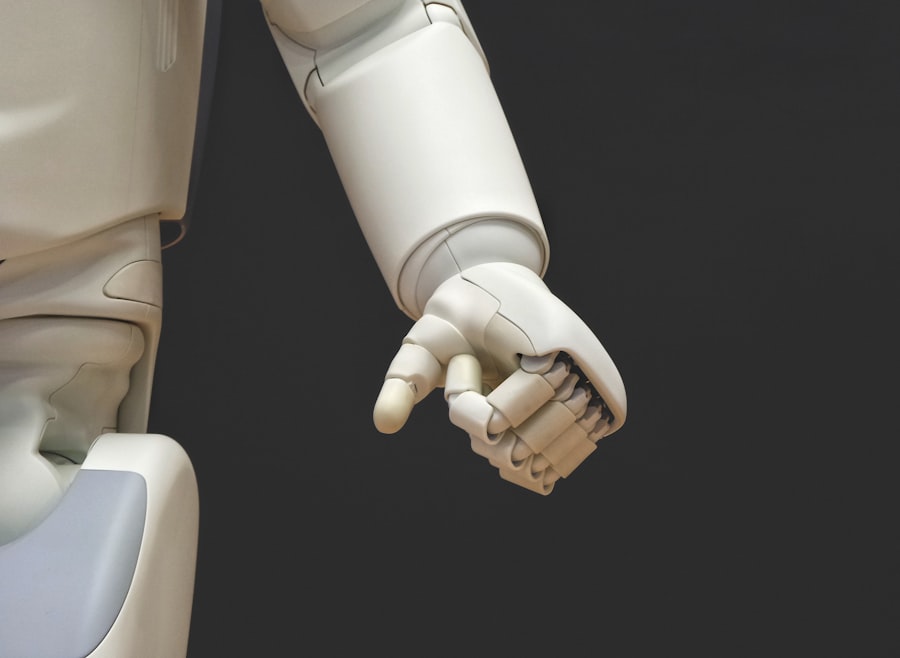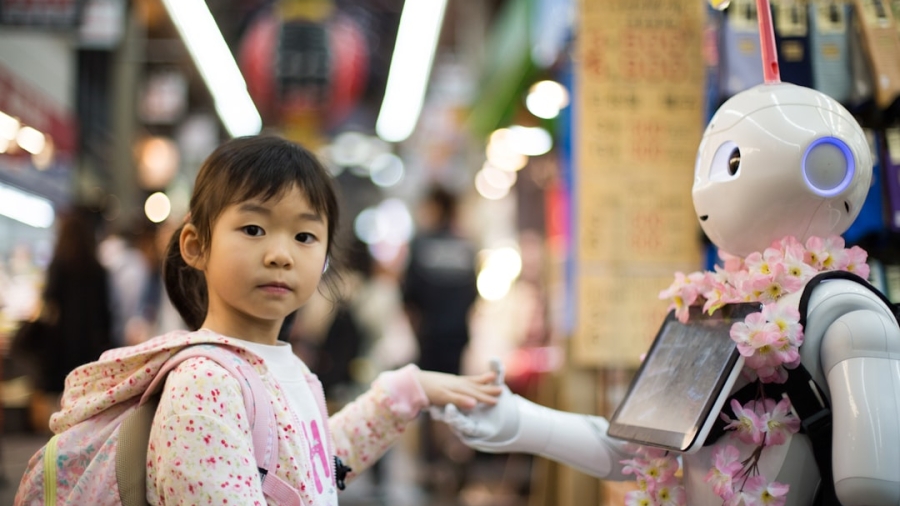The integration of robotics into healthcare has become a transformative force, especially in elderly care. As global populations age, there is an increasing need for innovative solutions to support older adults’ health and well-being. Robotics offers a multifaceted approach to address the unique challenges faced by this demographic, from promoting independence to enhancing quality of life.
Advanced technologies, including artificial intelligence and machine learning, have enabled the development of sophisticated robotic systems that can assist, monitor, and interact with elderly individuals in unprecedented ways. This evolution has the potential to reduce the burden on caregivers while empowering seniors to maintain their autonomy and dignity. The application of robotics in healthcare for the elderly represents a significant shift in how aging is perceived and managed.
Traditional care models often rely heavily on human intervention, which can be limited by workforce shortages and caregiver fatigue. In contrast, robotic solutions can provide consistent support, ensuring that elderly individuals receive assistance around the clock. The spectrum of robotic applications is diverse, ranging from robotic arms that aid in physical tasks to social robots designed to alleviate loneliness.
This technological advancement is not just about innovation; it is about improving human experiences and creating a more inclusive society for the aging population.
Key Takeaways
- Robotics in healthcare for the elderly is a rapidly growing field that aims to improve the quality of life for seniors through technological advancements.
- Robotic assistance can help elderly individuals with daily activities such as medication reminders, meal preparation, and mobility support, promoting independence and autonomy.
- Robotic companionship and social interaction can combat feelings of loneliness and isolation in the elderly population, providing emotional support and mental stimulation.
- Robotic monitoring and health management systems can track vital signs, detect falls, and provide timely medical assistance, enhancing safety and well-being for the elderly.
- Robotic rehabilitation and physical therapy can assist elderly individuals in regaining strength, mobility, and independence after illness or injury, improving overall health outcomes.
Robotic Assistance in Daily Activities for the Elderly
Assisting with Daily Activities
One of the most significant contributions of robotics in elderly care is its ability to assist with daily activities, thereby promoting independence among seniors. Tasks that may seem simple to younger individuals can become daunting challenges for the elderly due to physical limitations or cognitive decline. Robotic systems designed for this purpose can help with a range of activities, from basic household chores like cleaning and cooking to more personal tasks such as dressing and bathing.
Enhancing Autonomy and Self-Sufficiency
For instance, robotic devices equipped with sensors and artificial intelligence can navigate through homes, identifying objects and performing tasks with precision. This not only alleviates the physical strain on elderly individuals but also fosters a sense of accomplishment and self-sufficiency. In addition to physical assistance, these robotic systems often come with user-friendly interfaces that allow seniors to interact with them easily.
Personalized Support and Adaptation
Voice commands or touch screens enable users to request help or set reminders for medication and appointments. The integration of robotics into daily routines can significantly enhance the quality of life for elderly individuals by reducing feelings of helplessness and isolation. Furthermore, as these technologies continue to evolve, we can expect even more sophisticated systems capable of learning individual preferences and adapting to specific needs over time. This personalized approach ensures that elderly users receive tailored support that aligns with their lifestyles, ultimately leading to greater satisfaction and well-being.
Robotic Companionship and Social Interaction for the Elderly

Beyond physical assistance, robotics plays a crucial role in addressing the emotional and social needs of the elderly. Loneliness and social isolation are prevalent issues among older adults, often leading to detrimental effects on mental health and overall well-being. Robotic companions have emerged as a viable solution to combat these challenges by providing companionship and fostering social interaction.
These robots are designed not only to engage in conversation but also to recognize emotions and respond appropriately, creating a semblance of companionship that can be incredibly comforting for seniors living alone. The presence of a robotic companion can alleviate feelings of loneliness, offering a sense of connection that is vital for emotional health. Moreover, robotic companions can facilitate social interaction beyond one-on-one engagement.
Many of these systems are equipped with communication capabilities that allow users to connect with family members or friends through video calls or messaging platforms. This feature is particularly beneficial for seniors who may struggle with technology; a friendly robot can guide them through the process, making it easier to maintain relationships with loved ones. Additionally, some robotic companions are programmed to encourage participation in activities such as games or exercises, promoting both mental stimulation and physical activity.
By bridging the gap between isolation and social engagement, robotic companions are proving to be invaluable allies in enhancing the emotional well-being of elderly individuals.
Robotic Monitoring and Health Management for the Elderly
The role of robotics in healthcare extends significantly into monitoring and health management for the elderly. With chronic conditions becoming increasingly common among older adults, continuous health monitoring is essential for timely interventions and effective management. Robotic systems equipped with advanced sensors can track vital signs such as heart rate, blood pressure, and glucose levels in real-time.
This data can be transmitted to healthcare providers or family members, ensuring that any concerning changes are addressed promptly. Such proactive monitoring not only enhances patient safety but also empowers seniors to take an active role in managing their health. In addition to physical health monitoring, robotics can also play a pivotal role in cognitive health management.
For instance, robots can be programmed to remind users about medication schedules or upcoming medical appointments, reducing the risk of missed doses or neglected check-ups. Furthermore, some systems incorporate cognitive training exercises designed to stimulate mental acuity and delay cognitive decline. By combining physical and cognitive health management, robotic solutions offer a holistic approach to elderly care that addresses multiple facets of well-being.
As technology continues to advance, we can anticipate even more sophisticated monitoring systems capable of predicting health issues before they arise, ultimately leading to improved outcomes for elderly patients.
Robotic Rehabilitation and Physical Therapy for the Elderly
Rehabilitation and physical therapy are critical components of recovery for many elderly individuals who have experienced injuries or surgeries. Robotics has made significant strides in this area, providing innovative solutions that enhance rehabilitation processes. Robotic exoskeletons and assistive devices are being utilized to help seniors regain mobility and strength after debilitating events such as strokes or falls.
These devices offer targeted support during rehabilitation exercises, allowing users to perform movements they may struggle with independently. By providing consistent assistance and feedback, robotic rehabilitation tools can accelerate recovery times and improve overall physical function. Moreover, the integration of robotics into physical therapy allows for personalized treatment plans tailored to individual needs.
Advanced algorithms can analyze a patient’s progress over time, adjusting exercises based on performance metrics and recovery goals. This adaptability ensures that therapy remains effective and engaging for elderly patients, reducing the likelihood of frustration or disengagement from the rehabilitation process. Additionally, some robotic systems incorporate gamification elements into therapy sessions, making exercises more enjoyable while promoting adherence to treatment plans.
As we look toward the future, it is clear that robotics will continue to play an essential role in enhancing rehabilitation outcomes for older adults.
Ethical Considerations and Challenges of Using Robots in Elderly Care

While the benefits of robotics in elderly care are substantial, they are accompanied by a host of ethical considerations and challenges that must be addressed. One primary concern revolves around the potential for dependency on robotic systems. As seniors become accustomed to relying on robots for assistance or companionship, there is a risk that they may withdraw from human interactions altogether.
This shift could exacerbate feelings of isolation rather than alleviate them, undermining the very purpose of introducing robotic solutions into their lives. It is crucial for developers and caregivers to strike a balance between utilizing technology for support while encouraging meaningful human connections. Another significant ethical consideration pertains to privacy and data security.
Many robotic systems collect sensitive information about users’ health and daily activities, raising concerns about how this data is stored and shared. Ensuring robust security measures are in place is essential to protect vulnerable populations from potential breaches or misuse of their personal information. Additionally, there is an ongoing debate about the role of robots in decision-making processes related to healthcare.
While robots can provide valuable insights based on data analysis, it is imperative that human oversight remains central to healthcare decisions involving elderly patients. Addressing these ethical challenges will be vital as we continue to integrate robotics into elderly care.
Future Trends and Developments in Robotics for Elderly Healthcare
Looking ahead, the future of robotics in elderly healthcare appears promising as technological advancements continue to unfold at an unprecedented pace. One notable trend is the increasing emphasis on personalization in robotic systems. Future robots are likely to incorporate more sophisticated artificial intelligence capabilities that allow them to learn from individual users’ behaviors and preferences over time.
This level of personalization will enable robots to provide tailored support that aligns closely with each senior’s unique needs, enhancing their overall experience and satisfaction with robotic assistance. Additionally, we can expect greater collaboration between robotics developers and healthcare professionals as interdisciplinary approaches become more prevalent in addressing elderly care challenges. By working together, these stakeholders can ensure that robotic solutions are designed with practical applications in mind while adhering to ethical standards and best practices in patient care.
Furthermore, advancements in telehealth technologies will likely complement robotic systems by facilitating remote consultations between seniors and healthcare providers, thereby expanding access to care while minimizing disruptions caused by mobility limitations. As we embrace these trends, it is clear that robotics will play an increasingly integral role in shaping the future landscape of elderly healthcare, ultimately leading to improved outcomes and enhanced quality of life for older adults worldwide.
In exploring the advancements in technology that aid the elderly, it’s also interesting to consider how modern devices are tailored to specific user needs. For instance, choosing the right technology for different demographics can significantly enhance user experience and functionality. A related article that discusses this in the context of selecting smartphones, which can be crucial for elderly users to stay connected and safe, can be found here: How to Choose the Right Smartphone for Your Girlfriend. This article provides insights into the factors to consider when selecting a device, which can also be applicable when choosing devices for elderly users to ensure ease of use and accessibility.
FAQs
What are some ways that robots are helping the elderly in healthcare?
Robots are helping the elderly in healthcare by providing assistance with daily tasks, reminding them to take medication, monitoring their health, and providing companionship.
How do robots assist with daily tasks for the elderly?
Robots can assist with daily tasks for the elderly by helping them with mobility, such as getting in and out of bed or moving around the house, and by performing tasks like cleaning, cooking, and fetching items.
How do robots remind the elderly to take their medication?
Robots can remind the elderly to take their medication by providing verbal reminders, dispensing medication at the appropriate times, and sending alerts to caregivers if medication is not taken.
How do robots monitor the health of the elderly?
Robots can monitor the health of the elderly by tracking vital signs, such as heart rate and blood pressure, and by detecting falls or other emergencies and alerting caregivers.
How do robots provide companionship for the elderly?
Robots can provide companionship for the elderly by engaging in conversation, playing games, and providing entertainment, as well as by offering emotional support and reducing feelings of loneliness and isolation.

